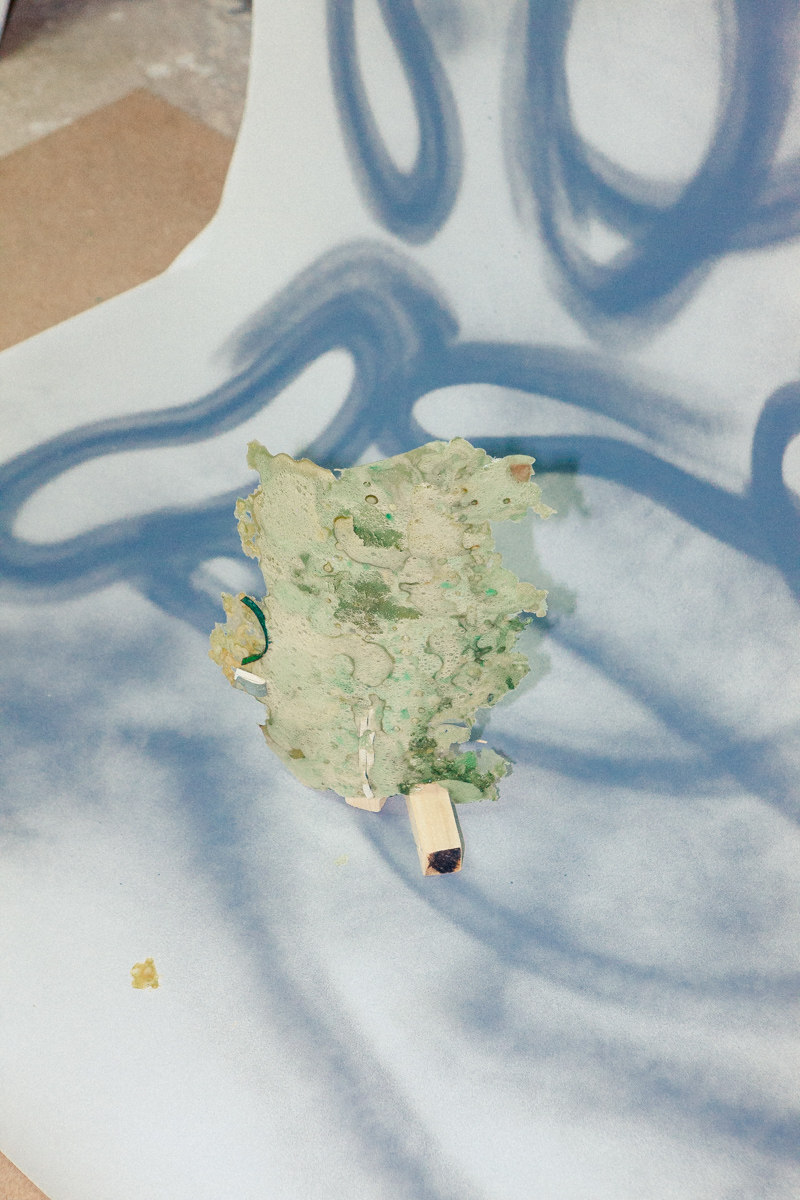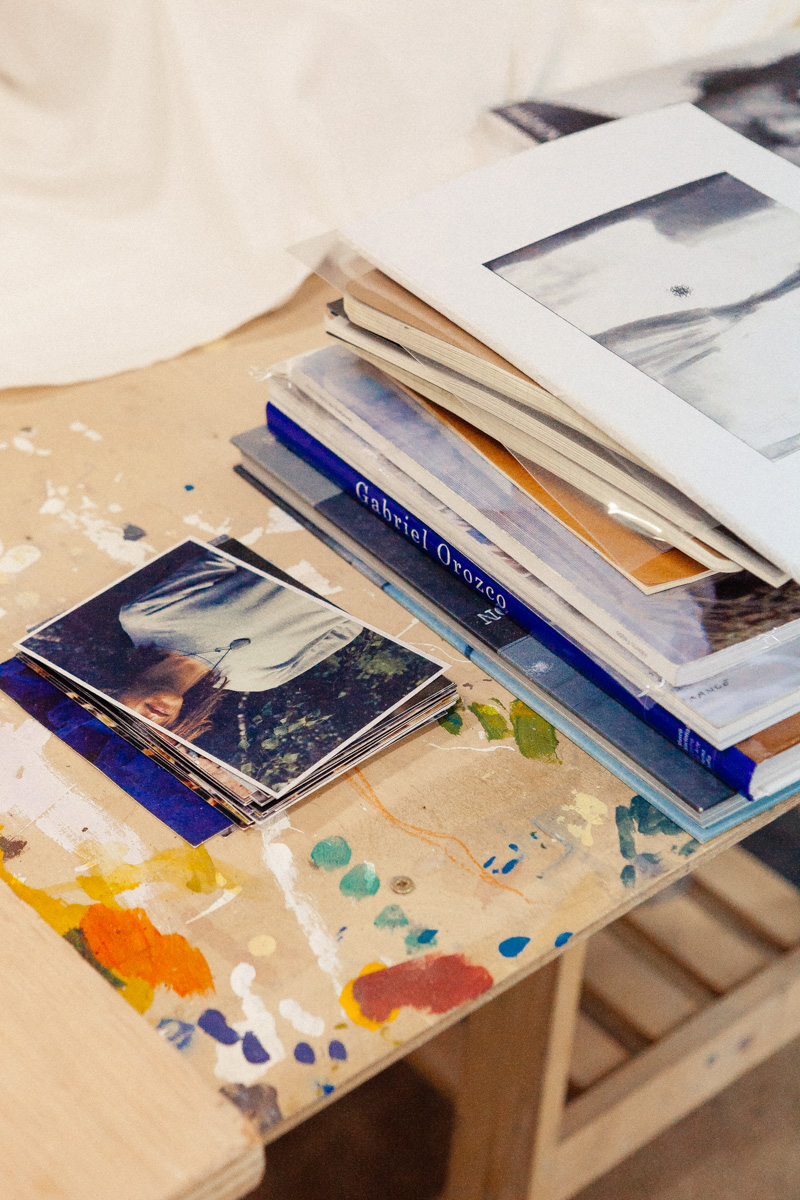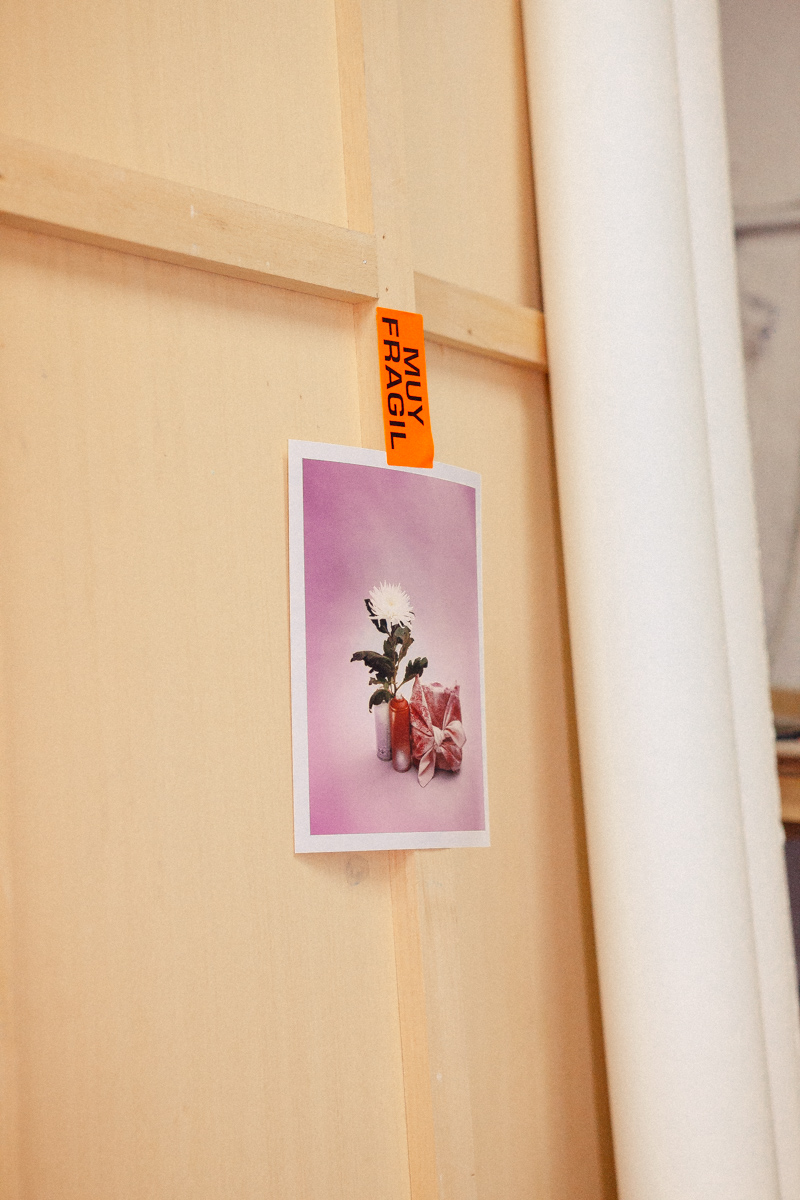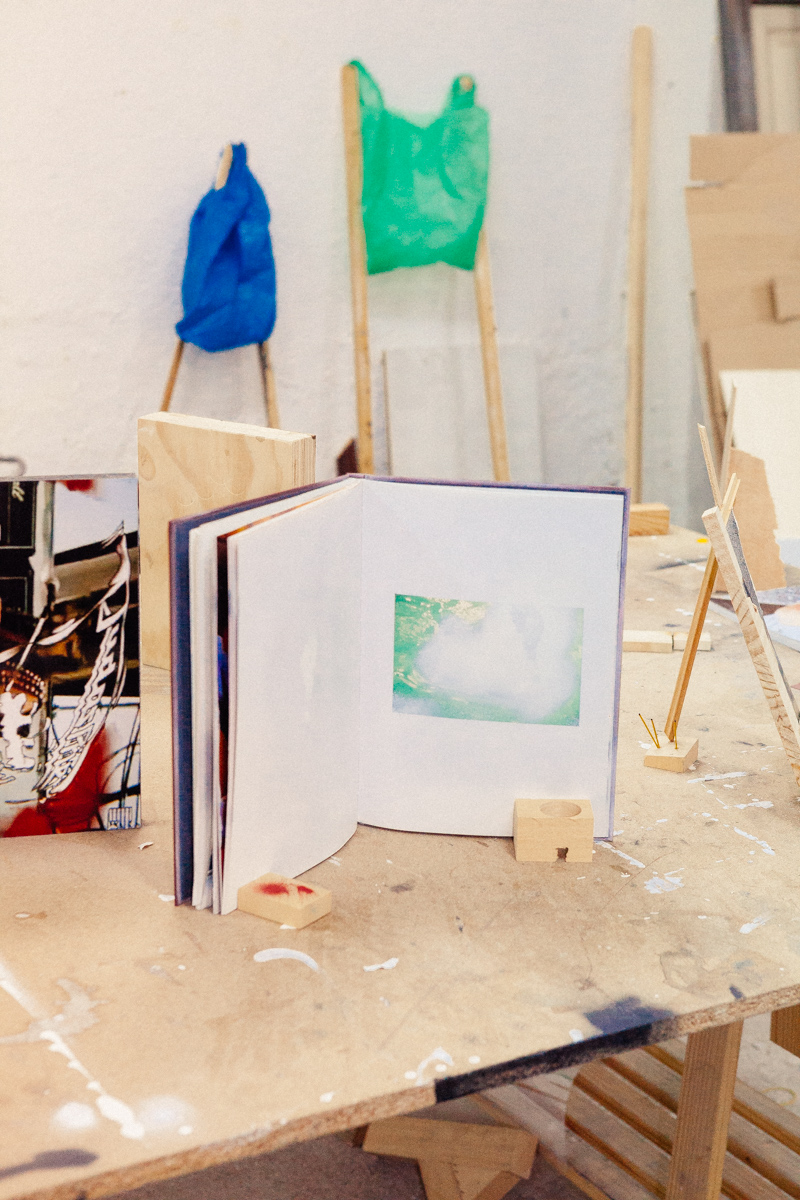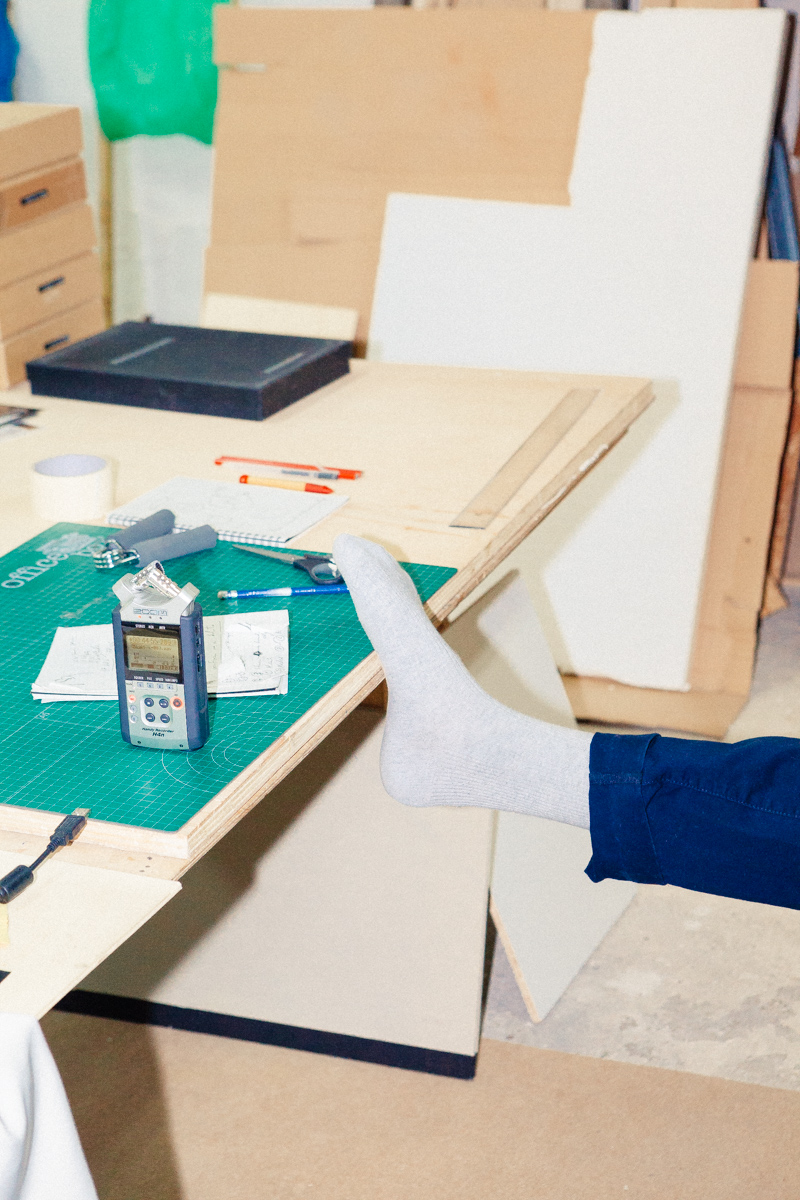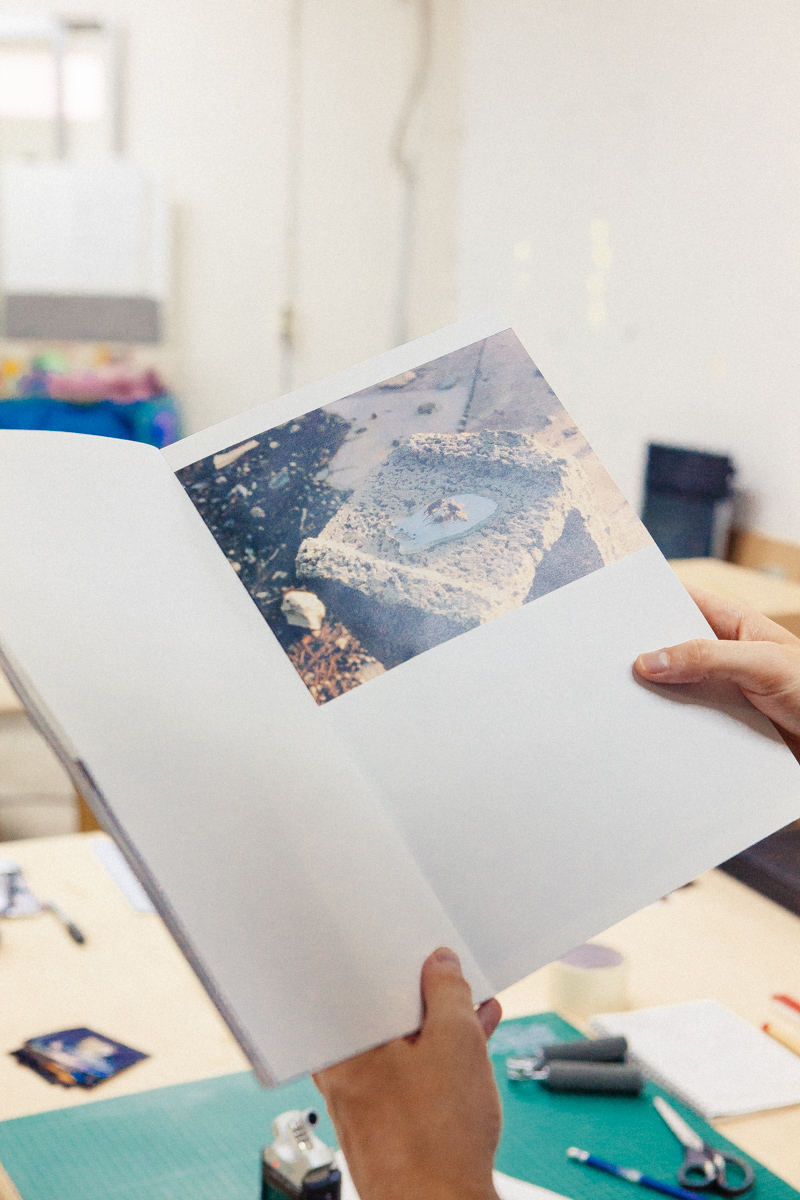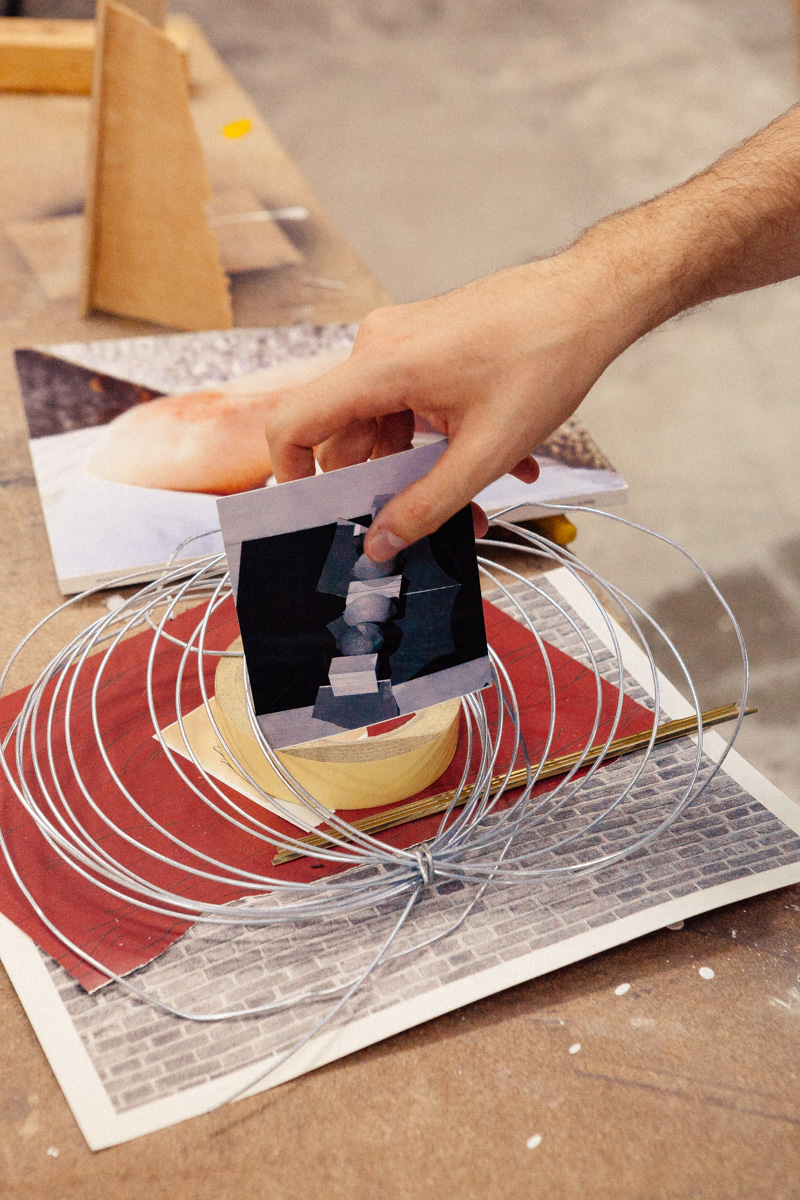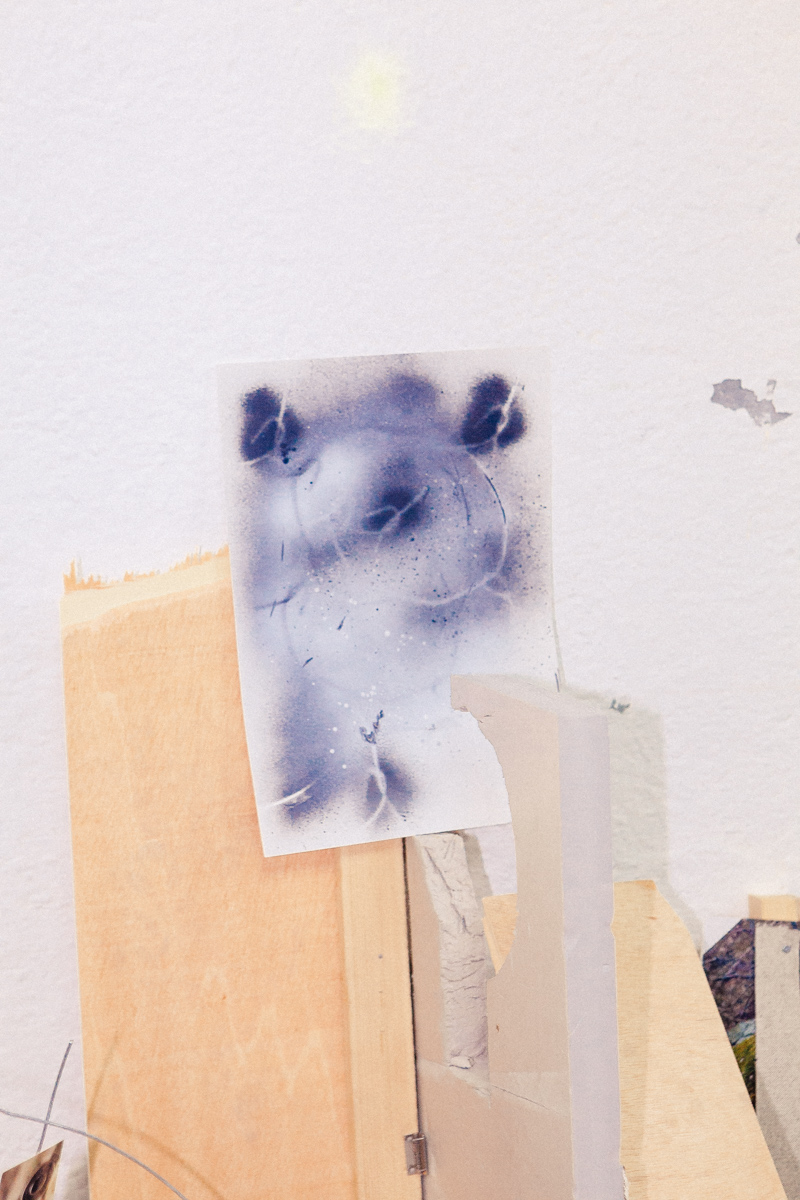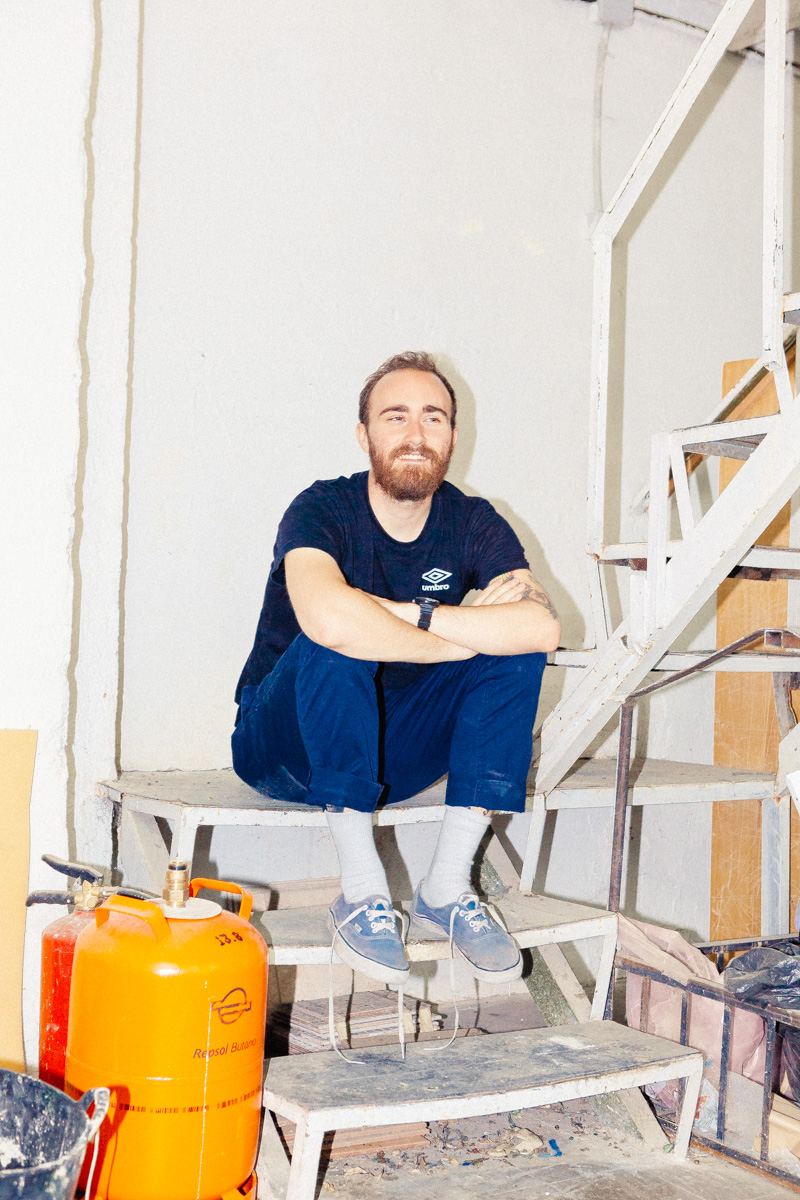Studio Visit – Alberto Feijóo
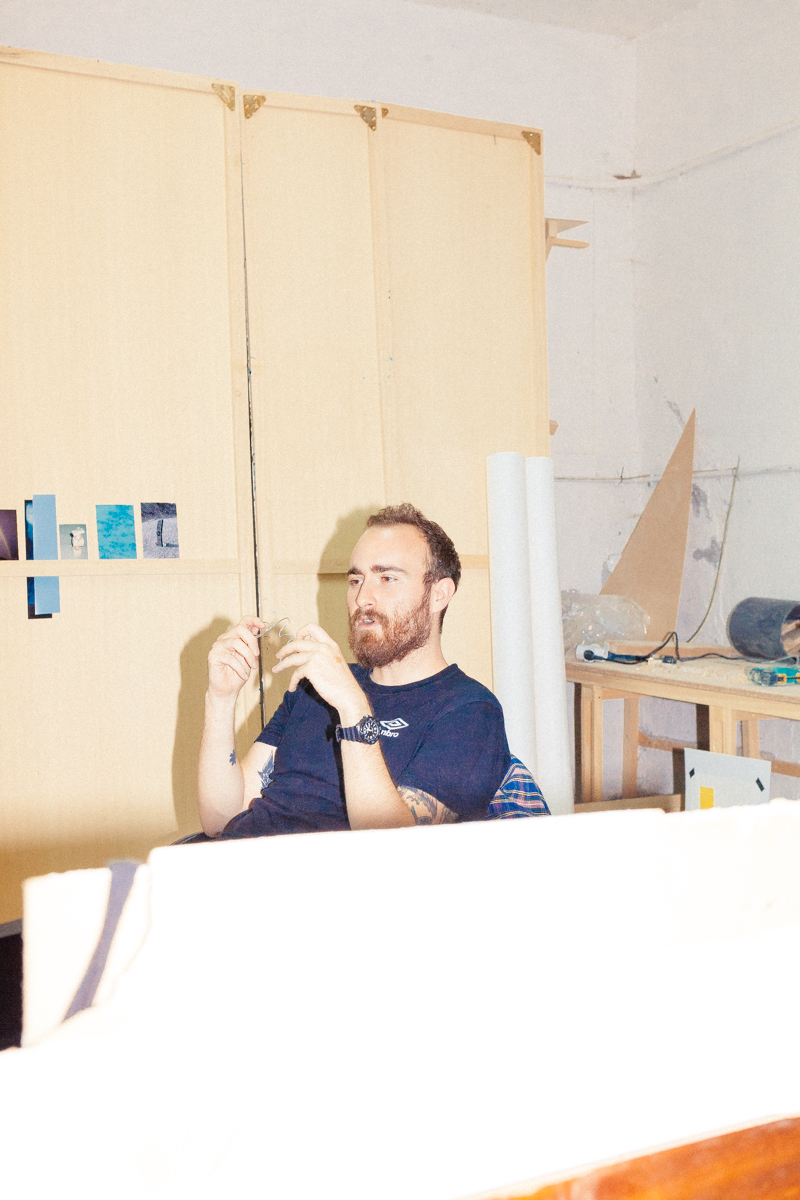
So, you’ve been here [Madrid] for almost a year, right? I see you already have your space perfectly setup, how is it going so far?
I’ve been here since October last year. When you came the first time, I remember it was quite cold but thankfully, now in the summer and since it’s in a basement, the temperature is perfect.
What about the people you share the space with? Is this space really different from the one in Alicante?
Sharing the studio is great! Julian Cruz’s paintings have influenced me a lot, I’m quite lucky he is here; I could spend hours watching him work. Then Jorge Penades’s work is more industrial and less conceptual but I’m really interested in his workflow, which is really material. So in the studio is a painter, an industrial designer and myself, working with photography in some way.
The space in Alicante is just a room in the house of my parents, but it’s completely different from this, you can’t compare.
Have you all thought about working on something together?
I’ve shot some photos of Jorge’s furniture and I have several ideas with Julian but we haven’t finish anything. We’ve never done anything definitive; maybe because there is no pressure to do it, we are always playing around.
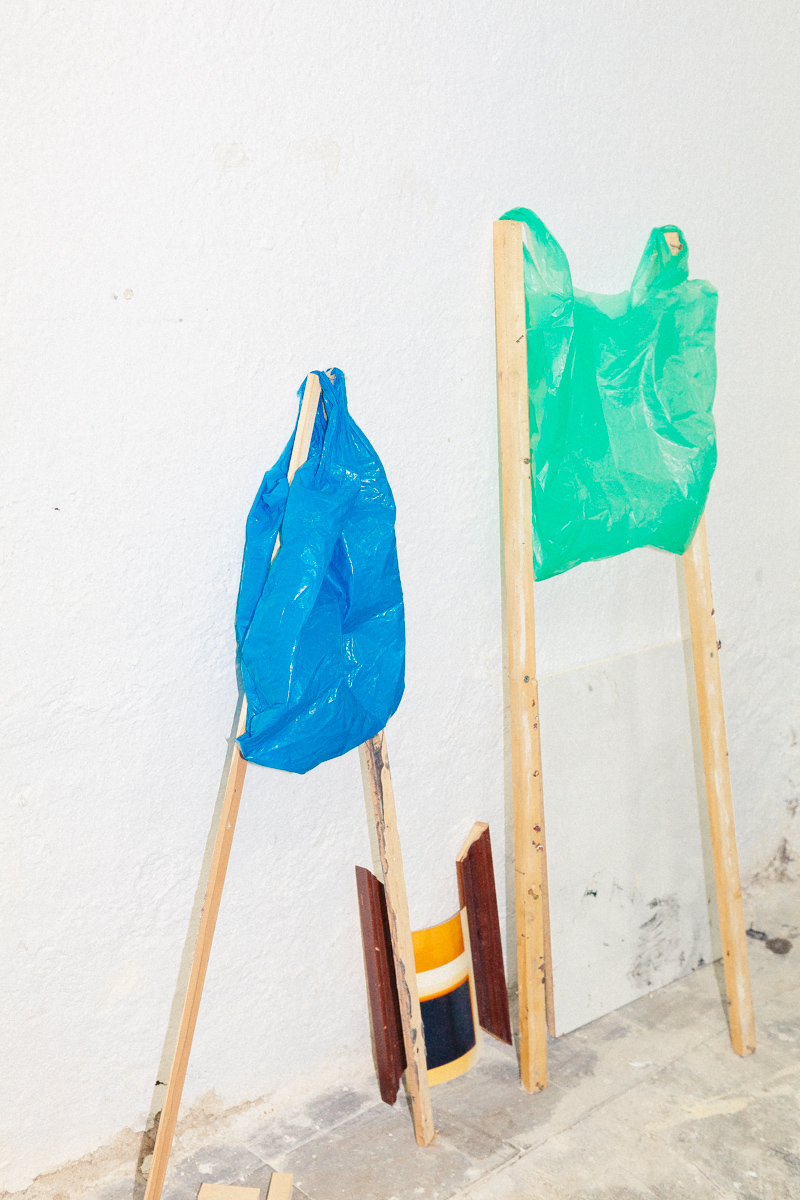
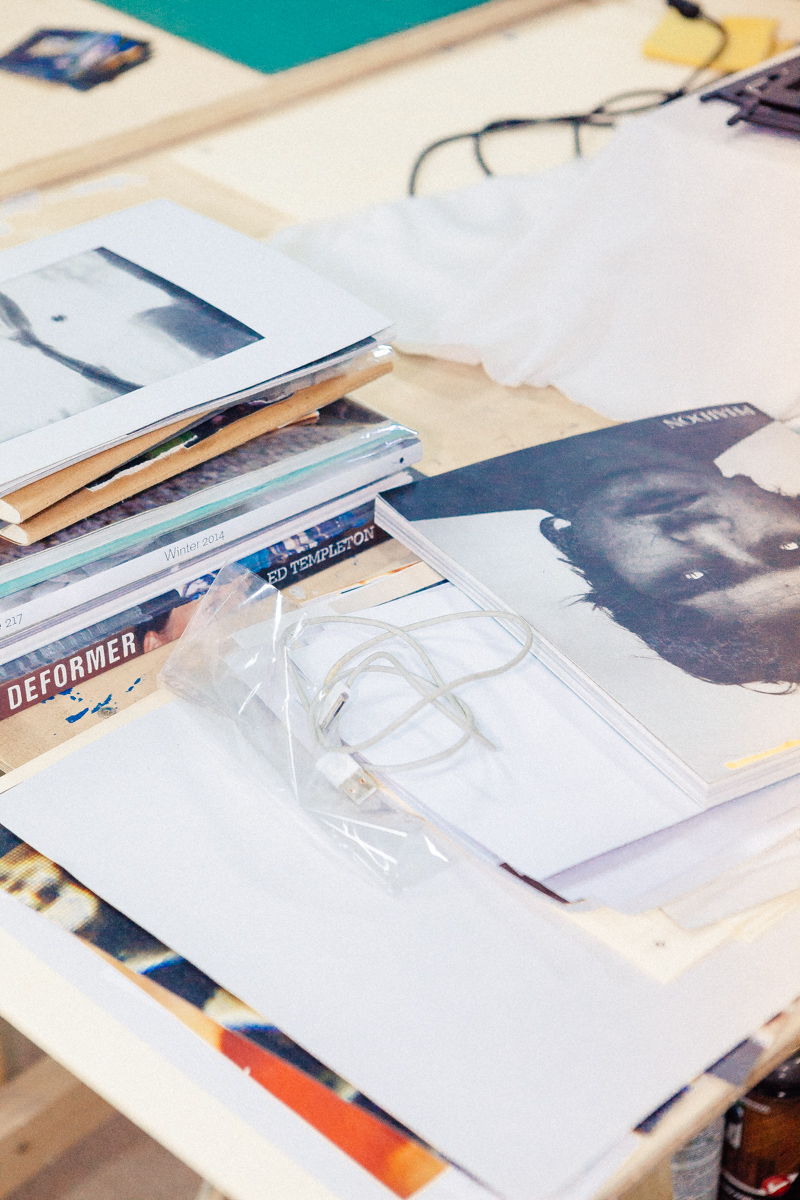
How long have you been here in Madrid?
Well, it’s six years so far. I came to study an MA in photography, wanting to specialize in something that I thought I could have a future in. I’ve done many things, time flies, I’ve had time to fail several times, and nothing is planned.
Do you think you could only work in Alicante? Like [Ricardo] Cases for example…
In Alicante I shot a ton of photos, more than here. It’s where I get my inspiration; it’s a context of action, of being constantly in alert. On the other hand, Madrid is more for investigation and reflection; it’s where I process the images.
It’s the same with when I take a trip, I love to travel and shoot but not the typical travel photography; I like to leave my comfort zone and this helps me to arrive at different ideas and projects.
Have you thought about leaving Spain in the short term?
I’m open to everything, I don’t have many things that tie me here, so I’m open and I think I could do it perfectly. I don’t think I would miss the typical things of Spain; I love to travel so it wouldn’t be a problem.
Talking about your work now, I like this ‘fight’ you have with photography, mainly because you might be one of the few photographers that doesn’t shoot much; how do you think having a studio, in an atelier way, has helped your practice?
The chance to have this workspace is incredible, it allows me to do everything I want and it gives me so much freedom and autonomy. It allows me to be myself in this small space; to have a studio is almost mandatory, it has helped me a lot to think and reflect. Even though I haven’t been here for that long, I couldn’t live without it now.
The opportunity to converge with other artists or spend time doing nothing; for me the fact of wasting my time in a free and anarchic way is interesting. Wasting your time in a healthy way!
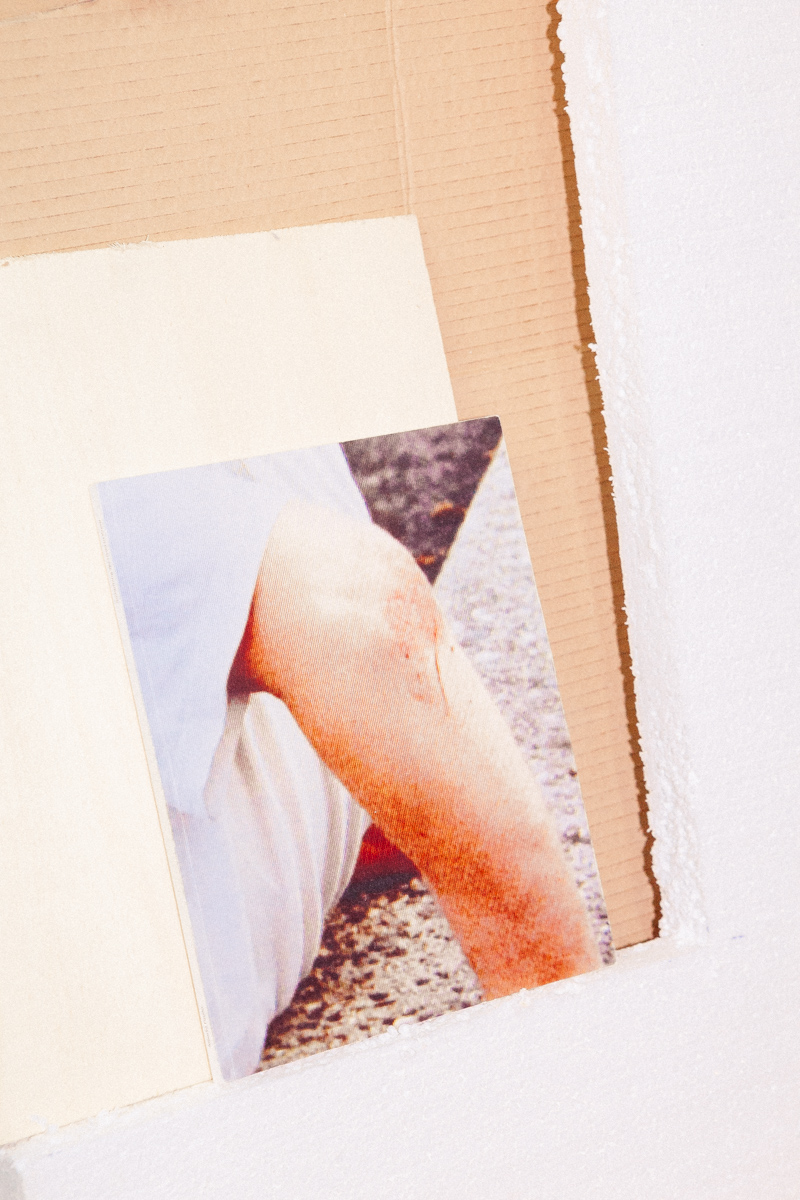
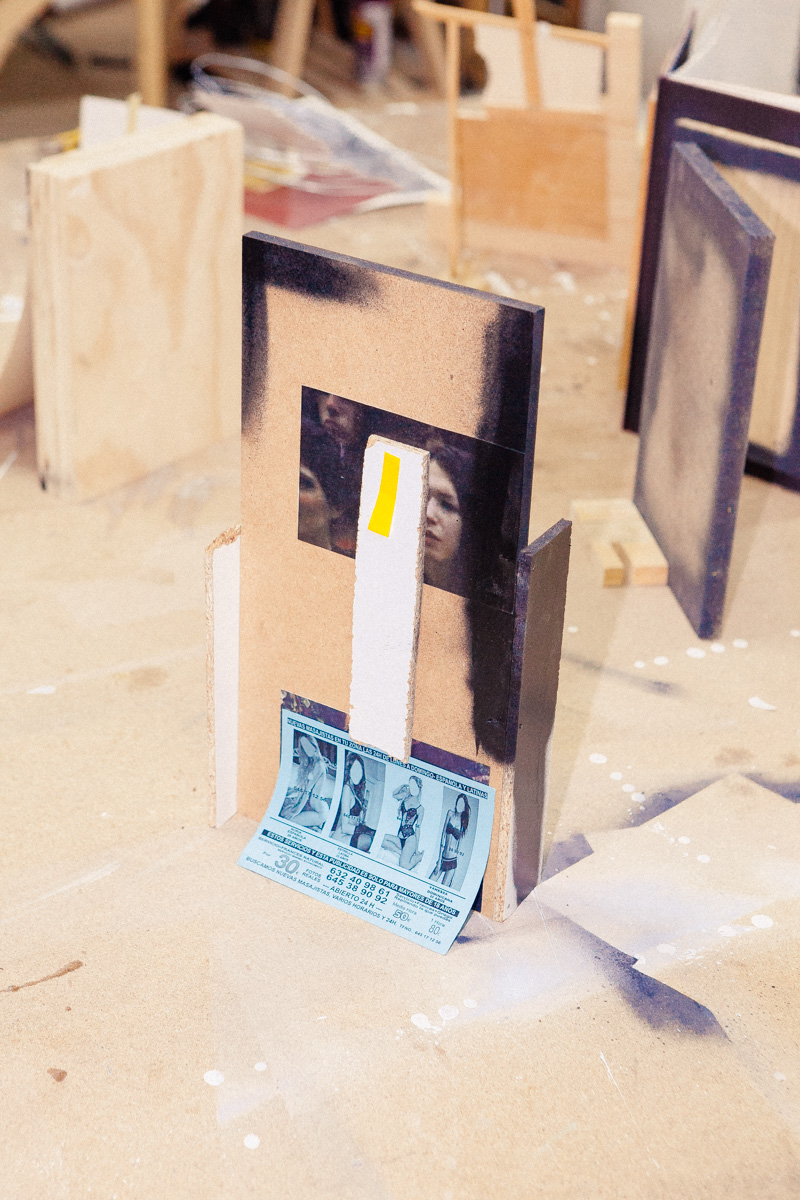
I’ve always had the feeling that your work is better understood in an international context rather than in Spain. For example, you were the only Spanish artist selected to present work at Platform in Switzerland. Do you think it lacks a point of maturity in Spanish photography?
Spanish photography is realising its limitations and there are people that are investigating and reflecting in other ways that are closer to installation or more conceptual ideas, such as the work of Julian Baron, Antonio Xoubanova or Aleix Plademunt. In this work, the discourse is much more conceptual and contemporary. Photography, like painting, will always have some traditional backgrounds, linked to its technique and that’s something I hate.
That’s interesting, because most of your photos are shot on film and you even develop it yourself.
Yeah, the foundation of my work is a love – hate relationship with photography. In my case I never want to get married to my camera or fuck my lenses or copies, as some photographers I know, that’s crazy to me.
In this space, between the love and the hate, is where my praxis shows up. In some way it’s really photographic, canonical and traditional, but on the other hand I want to debunk the image. The bad thing is that I feel misunderstood in both the photography and the contemporary art worlds. In the end, this doesn’t worry me so much; it’s nice, because art as photography is a constant fight, a permanent conflict.
I really like to work with paper, with the physical part of the image. I produce a lot of pictures and I accumulate layers and layers to create a body of work. I can’t work with only one image to explain something; I work more in series of images. The only rule in my work is to experiment as much as possible.
I can see this position in your new work but also in your past works, like Life is for Everyone, that you have recently changed. I remember it as a series of normal photos and now it’s been updated to collages.
Yes, it was pure photography before and now what you can see are the remains of the past of the time. I’m more interested now in the process and the discards that produced this work. I’ve removed the definitive photos to keep the process.
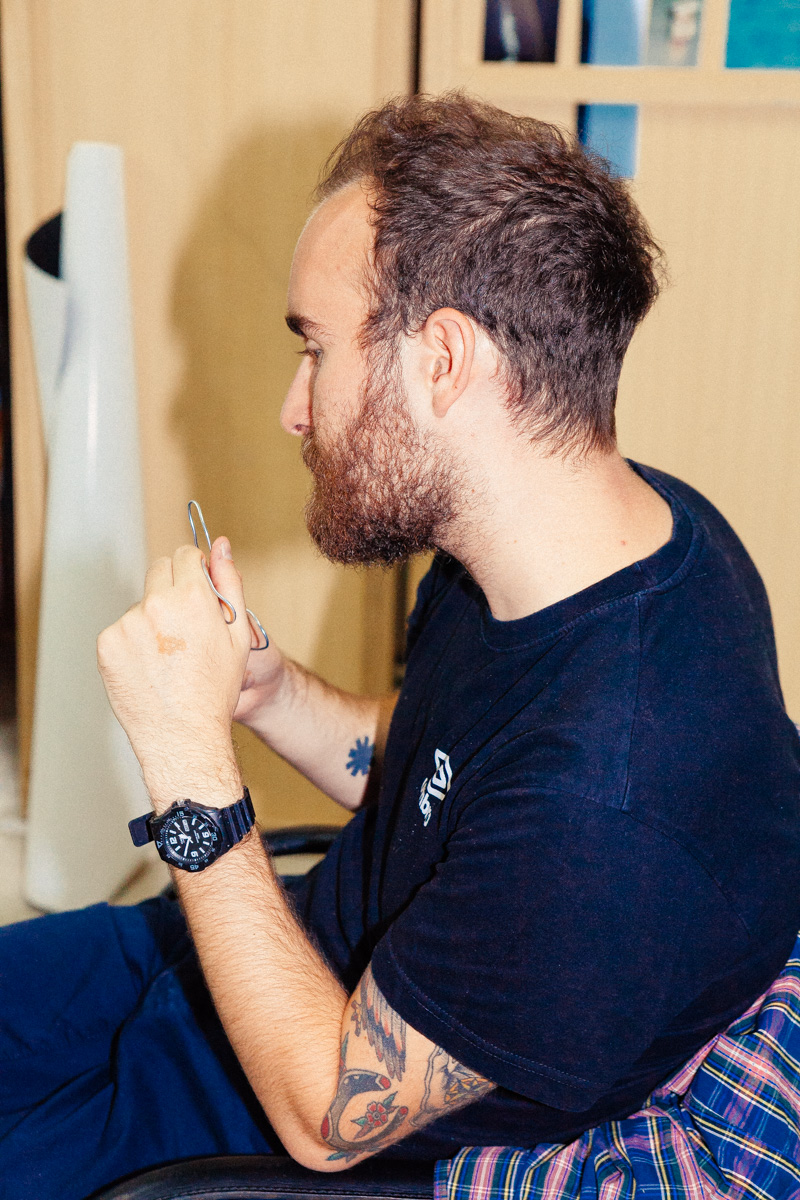
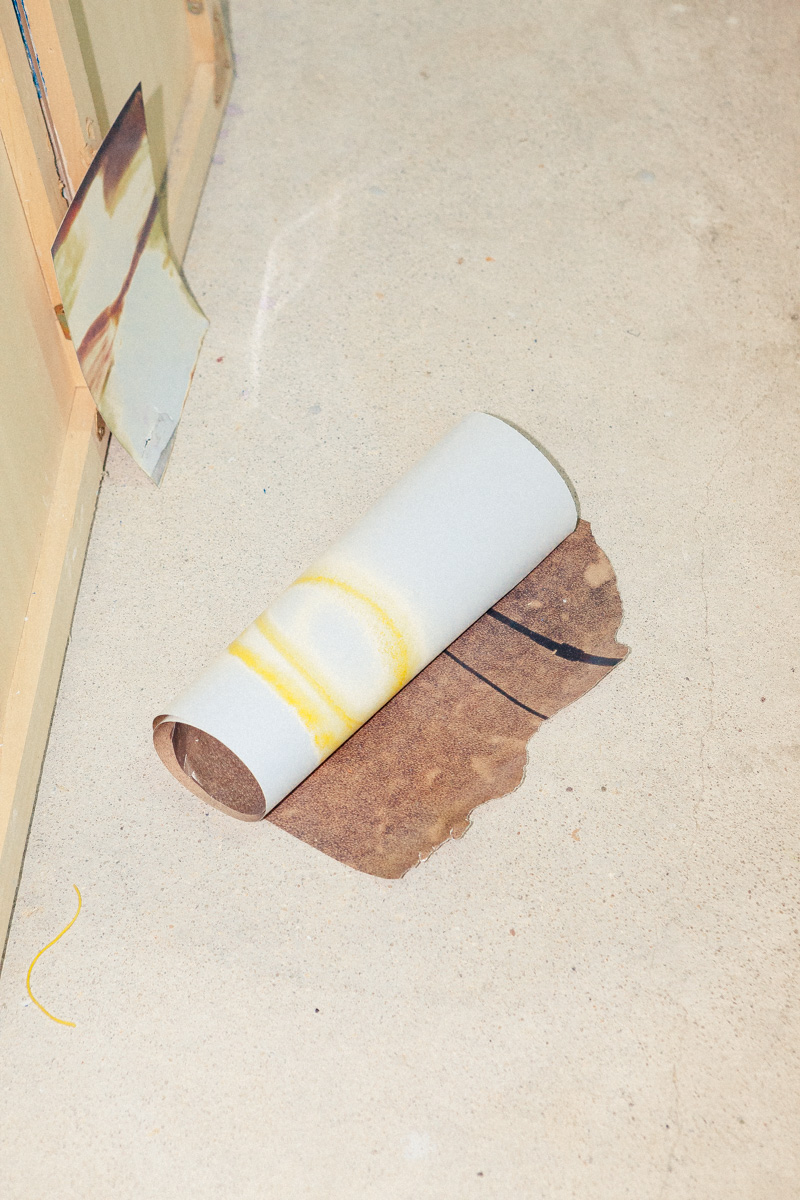
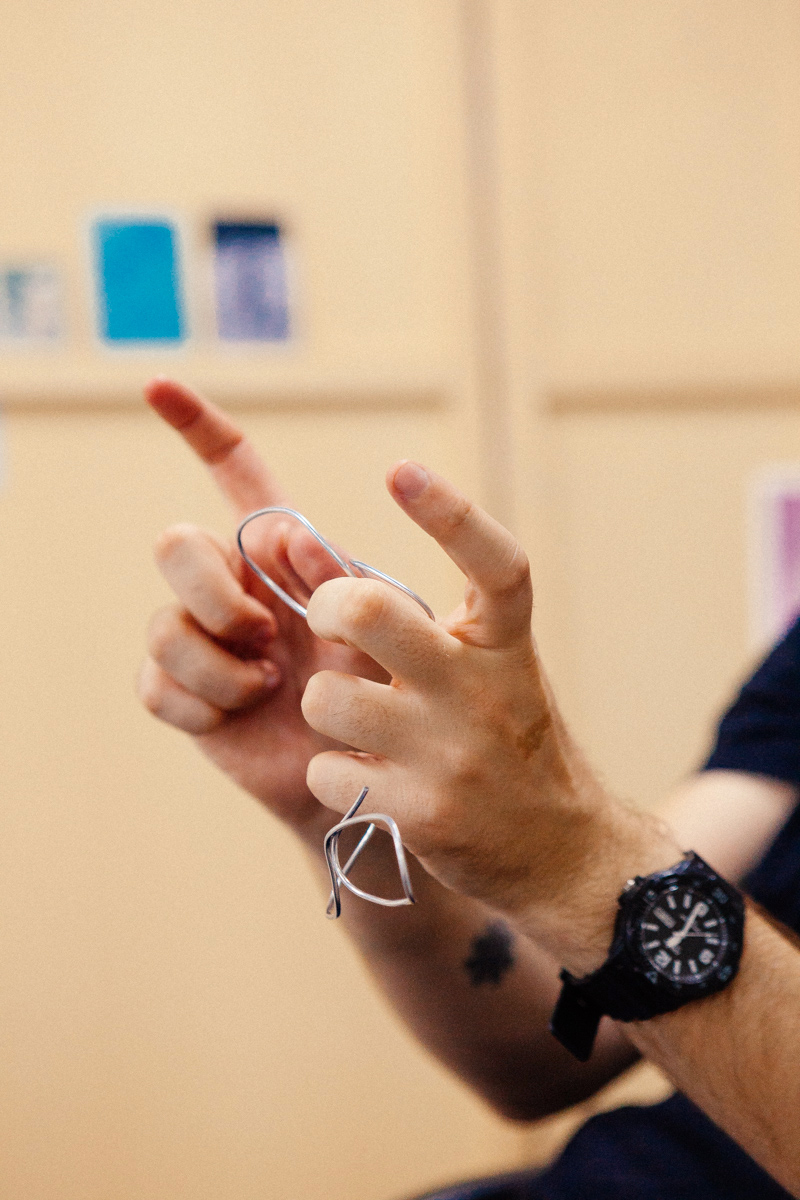
Then Before Adam or I Want You are more photographic…
Before Adam is a B side of a project I wanted to do. With I Want You I liked the way of transmitting something with a unique picture: the portrait, the landscape. It’s a project about a group therapy I attended in London, every image has its own discourse and a lot of weight for me. In that moment my photography was really humanistic and documentary, it was a reaffirmation as a photographer.
I wanted to ask about SWUTK (Something We Used To Know), do you think this project was a turning point for you?
Yes. First was the book, which opened many doors for me to experiment with the image. I saw myself really free to do weird things. In the beginning the work was pretty documentary, I went to different cities in Europe photographing young people; it looked like I Want You but then I realised that I was spending too much time watching and listening to music on YouTube and I wanted to add this to the project.
The challenge of the project was trying to mix two different kinds of images, ones that were classic and traditional and others that were dirty and more contemporary, creating new layers and overlaying them.
The exhibition came afterwards, I started to do collages and print on fabric, since it’s a project related to youth, the walk from adolescence to maturity…
So it’s not only a turning point in a photographic way, but also a personal one.
Sure, it allowed me to change many things and learn a lot. When I made it I was 27 and I felt a change.
All your projects have your own style; do you think that all your work is related somehow?
It’s true that I’ve many things open and I’m experimenting a lot with the possibility of not understanding it, but I think you could place everything together in a room. SWUTK is easier to understand because it’s closed like a book but the new projects are more experimental, they mix performance or collage; I’m in a confusing space right now of how I want to communicate things.
And what are you working on right now?
At the moment I’m investing all my time in Rosetta. It has an installation component that’s already finished and a second part; I don’t know which shape it will take, maybe a photo book, maybe something more along the lines of an installation. For me, Rosetta is a relief, it’s a theme that’s really closed but offers a lot of possibilities. I want to talk about my personal experience, but also about history, the city, experiences; it’s a bridge between history and fiction. Luckily, this is on track.
